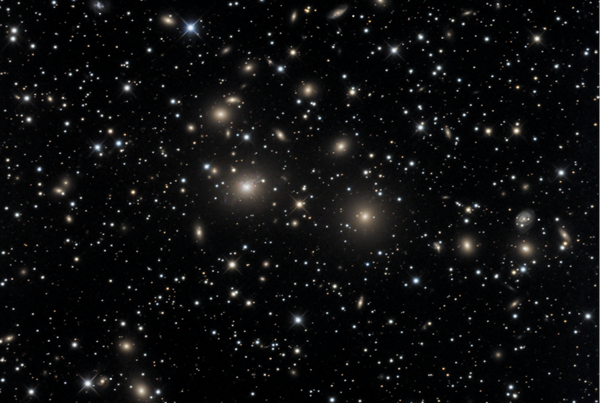NGC 1275, often referred to as Perseus A, is the brightest member of the Perseus galaxy cluster. It lies roughly 225 million light-years away and has a diameter of slightly more than 100,000 light-years. The A part of its designation means the object is a strong source of radio emission.
NGC 1275 is considered a Seyfert galaxy. Each member of this class of active galaxies has a brilliant quasarlike nucleus, but not so bright that it drowns out the rest of the galaxy.
In addition to being a strong radio source, NGC 1275 is also a strong emitter of X-rays. The source of this radiation is the center of the galaxy, where a supermassive black hole with a mass some 800 million times that of the Sun gorges itself on gas. The friction and other forces produced by the gas as it spirals into the black hole generate X-rays.
The Perseus galaxy cluster, also known as Abell 426, is part of the Pisces-Perseus Supercluster. This chain of galaxy clusters stretches more than 40° across the sky. To find the Perseus galaxy cluster, look 2° east of Algol (Beta [β] Persei). Through a large amateur telescope, several of its galaxies — all ellipticals — appear bright, small, and nearly circular. Don’t confuse NGC 1275 with NGC 1272, a similar galaxy just 5′ to the west. NGC 1272 is ever-so-slightly brighter.
Through a 10-inch telescope, you’ll spot a dozen galaxies in a field of view 1° across. Most lie south and west of NGC 1275. Here’s a region of sky where increased aperture really pays off. As you look through larger telescopes, you’ll see more galaxies, and the ones you’ve already spotted will show a bit more detail — as much as ellipticals can show, anyway.
Make sure to explore Astronomy’s full list of 101 cosmic objects you must see. New entries will be added each week throughout 2022.










